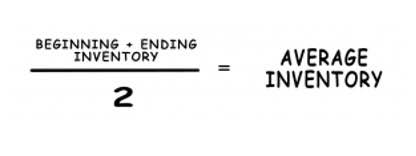
Join over 1 million businesses scanning receipts, creating expense reports, and reclaiming multiple hours every week—with Shoeboxed. Join over 1 million businesses scanning & organizing receipts, creating expense reports, and more—with Shoeboxed. One of the most significant differences is how they approach bookkeeping. Take our 2-minute survey to find out if outsourced accounting and bookkeeping is a good fit for your organization.
Donor Contributions and Grants

Manage receipts, record payments, and reconcile accounts at your convenience. A accounting services for nonprofit organizations non-profit statement of financial position should reflect all restricted, temporarily restricted, and unrestricted assets held at a given date. Depending on the non-profit’s size, there may be some overlap in responsibilities, such as reconciling accounts or tracking expenses. There are some specific functions that non-profit accounting includes, that must be handled properly with the help of accounting software. The idea of fund accounting, which emphasizes accountability rather than profits, is the primary difference between for-profit and non-profit standards. Non-profits often have a variety of general ledgers, or funds, as opposed to profit entities, which have a single self-balancing account.
Recording and tracking revenue and expenses
- Under Generally Accepted Accounting Principles, nonprofit bookkeeping is a unique way of planning, recording, and reporting an organization’s finances.
- On the other hand, NonProfitPlus doesn’t list any pricing on its site—as with Sage Intacct, you have to get in touch with a representative for a quote.
- While business stakeholders are concerned with profits, nonprofit stakeholders and board members want to know if the resources are properly utilized and allocated.
- Our bookkeeping and accounting professionals can offer full-service support at a reasonable rate.
- If your nonprofit is just getting started with bookkeeping, you may not have the resources or level of need to bring on a new team member to fill that position.
- By tracking categories, you know if funds are being allocated to the right projects based on donor intent.
- An annual operating budget for a university will be very different than a budget for a small local art gallery.
Wave uses accountant-friendly double entry accounting — just set them up and get back to your organization. If your non-profit lacks the bandwidth or expertise to keep up with fund accounting rules, you could risk paying fines or losing your tax-exempt status. Many small non-profits have a modest budget or minimal operating activities. If your non-profit can’t hire an employee with specialized experience, consider outsourcing to third-party professionals. Bookkeeping professionals can help your non-profit maintain accurate records and comply with reporting requirements.

Easy-to-use accounting software for nonprofits
- But if you’re already falling behind in your books, you can’t rely on a google search or blog article to get you back on track.
- For example, imagine your non-profit has a long-standing relationship with a local company.
- Accountants often opt for certifications to improve their credibility, such as taking the CPA exams to become a certified public accountant.
- Several factors will determine the expenses of bookkeeping for a small company or non-profit.
- Nonprofits must track and report financial information separately for each fund or grant.
One of the first things we need to clarify before digging deeper into bookkeeping for a nonprofit is the difference between nonprofit and for-profit entities. Invoices should include a header with your logo and contact information, client contact information, invoice number and date, itemized breakdown of services, and terms and conditions. Even if your nonprofit isn’t selling anything, you’ll still need to process invoices. Now that we’ve learned the ABCs of accounting, let’s dive a bit deeper into some other vocabulary you’ll likely run across. If you view reporting as a hierarchy, FASB reports fall higher on the spectrum than the GAAP reports. One of the greatest differences between these types of organizations is in bookkeeping.
- Nonprofit organizations are entities organized and operated exclusively for educational, social, professional, charitable, health, or other nonprofit purposes.
- Nonprofits use a chart of accounts, a categorized list of all the accounts used to classify financial transactions.
- QuickBooks offers a discount on its QuickBooks Online software through TechSoup.
- This process helps identify and correct discrepancies, preventing potential issues down the line.
- Other features you may want to consider include whether the software has a mobile app, how good its customer service is and how well it does with accounts receivable (A/R) and financial reporting.
- The unique needs of nonprofits require a specialized set of tools from accounting software.
- That’s why nonprofits employ a type of accounting known as fund accounting.
Each subscription includes a 24/7 online Help Center, phone support, online webinars, personalized training, local user groups and an annual client conference. Put simply, whatever support format is easiest for your church is available with Realm. Through professional development programs, conferences, and workshops, nonprofit accounting professionals https://www.bookstime.com/ should stay updated with the latest accounting regulations, standards, and best practices. This helps ensure that accounting practices align with industry standards and evolving regulations. Does your nonprofit have a dedicated team member with both the skillset and capacity to handle your accounting needs?


For instance, if programs or projects are discontinued, funding falls through, or your funding increases, you can address the issues and adapt your strategy right away. It’s important to review and adjust the spending budget for the remainder of the year to cut back expenses if necessary, or to further fund your mission if you receive unexpected funding. Chances are, it wasn’t tedious paperwork, challenging calculations, and compliance regulations. What likely drove you CARES Act to join was (and continues to be), the nonprofit’s mission.
You know you need to keep your receipts and records, but you’re slowly finding that bookkeeping is more complex than simply tracking expenses. Bookkeeping for non-profit organizations requires a specific skill set because the rules differ from for-profit bookkeeping rules. But even with its extensive accounting features, QuickBooks’s nonprofit software still doesn’t have as many nonprofit-specific features as Sage Intacct and Aplos. It’s also on the pricier end of accounting software that wasn’t built for nonprofits. If you’re trying to balance a nonprofit budget on, well, a budget, Xero, Zoho Books, and FreshBooks are cheaper options, and Wave Accounting is completely free.
